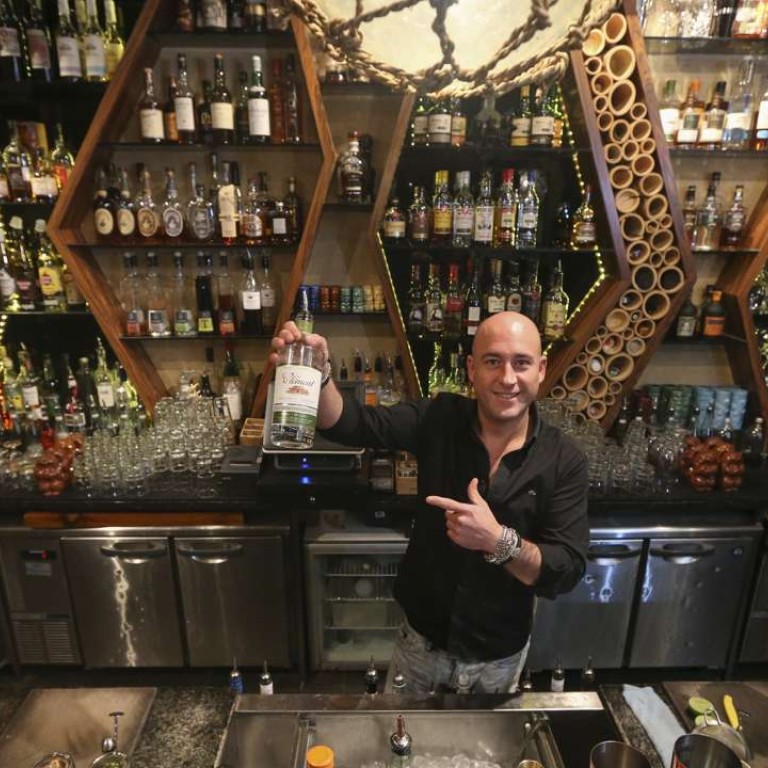
4 great places in Hong Kong to drink classic tiki bar cocktail, the mai tai
The rum-based drink will always be associated with tiki bars – fanciful evocations of the South Pacific life that have newly made a comeback, even in Hong Kong – but regular bars make some mean versions too
Tiki bars are back in vogue, and with them their signature cocktail, the mai tai.
Based on a fanciful North American idea of a South Pacific lifestyle, tiki bars had their heyday from the 1940s to 1970s, but by the 1980s had ceased to be regarded as in any way cool.
In the modern era of archly ironic appreciation of kitsch, however, the tiki bar fits in perfectly – if it is done well. Many of the old ones really were awful. They were generally full of cheap bamboo furniture, staffed by bartenders in lurid Hawaiian shirts, and served dreadful cocktails made with low-grade spirits and fruit juice.
There is no dispute about which tiki bar/restaurant was the first, and fittingly it was a child of Tinseltown. In 1933 Ernest Gantt, who subsequently changed his name to Donn Beach, opened a South Seas themed bar called Don The Beachcomber’s Cafe in Hollywood. Along with its successor, opened in 1937 and called simply Don The Beachcomber, it enjoyed a reputation for strong, rum-based cocktails, and eventually expanded into a successful chain.

Don the Beachcomber’s great rival, Trader Vic’s, opened its first outlet in 1934 under the name Hinky Dink’s. It developed its tiki theme a little later, but between them, the two chains popularised the tiki style across the United States and internationally.
Both claimed credit for the mai tai. Gantt/Beach, who had picked up his tiki bar ideas travelling in the South Pacific, said he created it in 1933. Victor “Trader Vic” Bergeron, however, insisted that the original recipe was his, although he gave the date as some time in 1944.
“After success with several exotic rum drinks, I felt a new drink was needed,” Bergeron wrote, some years later.
“I was at the service bar in my Oakland restaurant. I took down a bottle of 17-year-old Jamaican J. Wray and Nephew rum, added fresh lime, some orange curacao from Holland, a dash of rock candy syrup, and a dollop of French orgeat [syrup], for its subtle flavour. A generous amount of shaved ice and vigorous shaking by hand produced the marriage I was after. Half the lime shell went in for colour. I stuck in a branch of fresh mint and gave two of them to Ham and Carrie Guild, friends from Tahiti, who were there that night. Carrie took one sip and said, ‘Mai tai – roa ae’. In Tahitian this means ‘Out of this world – the best’. Well, that was that. I named the drink mai tai.”
Bergeron died in 1984, and Gantt/Beach in 1989, so we shall probably never know the truth for sure, but the dispute seems to be mostly over a name. Certainly the recipes for the drinks are significantly different. Don The Beachcomber’s more complicated formula also includes grapefruit juice, Pernod, and Falernum syrup.

A more important question is which suits your particular taste? Honi Honi, which serves both, is the ideal place to find out.
“People ask for the Trader Vic’s and right after they ask for the Don The Beachcomber to see the difference. The Trader Vic’s is a bit more sour and the Don the Beachcomber is a bit more fruity. It’s a completely different taste. We haven’t created a new one of our own, because those two are classics and we want people to understand them. We have our own selection of other cocktails, but we want to leave those two pure,” says owner Max Traverse.
That is not to say that the Honi Honi mai tais are exactly what is served in Trader Vic’s and Don the Beachcomber outlets today. Traverse has done a little fine tuning – and they almost certainly taste better than the 1933 or 1944 originals, which would have been made with lower-quality spirits.
For the Trader Vic’s mai tai, for example, Traverse mixes Clement White Rhum Agricole, and Appleton 12-Year-Old golden aged rum from Jamaica, and Creole Shrubb Rum Orange Liqueur rather than the more typical orange syrup or curacao.
“The classic Trader Vic’s mai tai is very simple and it used to be made with very basic ingredients. The mai tai they made 50 years ago is not the same as we can make now. The spirits are a lot better and there is much more choice of rums, bitters and liqueurs, so you can elevate the quality of the cocktail.”
The version of the mai tai Traverse first learned to make when studying in France was definitely created by Victor Bergeron – but it wasn’t the Trader Vic’s classic recipe.

In 1953 The Royal Hawaiian Hotel in Honolulu commissioned Bergeron to devise some new cocktail recipes, and he came up with one for a mai tai with pineapple juice which is still served today in their Mai Tai bar on the edge of Waikiki Beach. I stayed there recently, and it tastes good on location, but Traverse’s interpretation of the classic undoubtedly has more depth of flavour.
“People used to put in grenadine as well to get a reddish drink, but bartenders now are trying to bring the originals back, because it’s the right taste. The reddish colour should come from the bitters.”
“The quality of bars here has increased a lot. There are many places you can find a good mai tai now,” he says.
Honi Honi Tiki Cocktail Lounge, 3/F Somptueux Central, 52 Wellington Street, Central, tel: 2353 0885
Mahalo Tiki Lounge, 29/F QRE Plaza, 202 Queen’s Road East, Wan Chai, tel: 2488 8750
Zuma, Level 5 & 6, Landmark, 15 Queen’s Road Central, tel: 3657 6388
Lobster Bar and Grill, Island Shangri-La, Supreme Court Road, Pacific Place, Central, tel: 2820 8560

